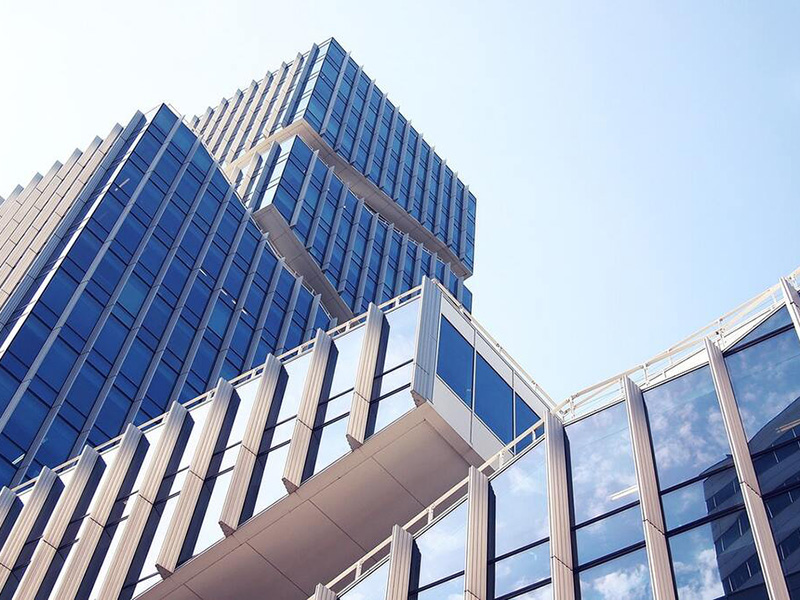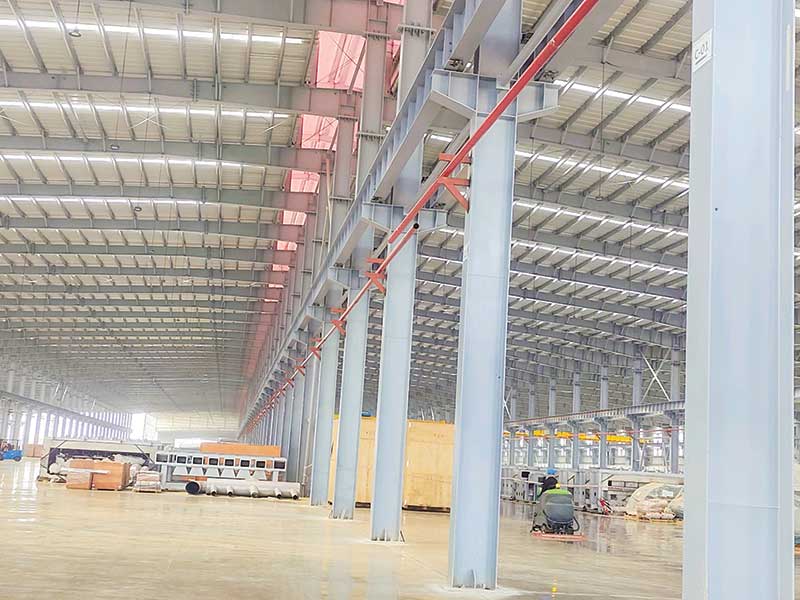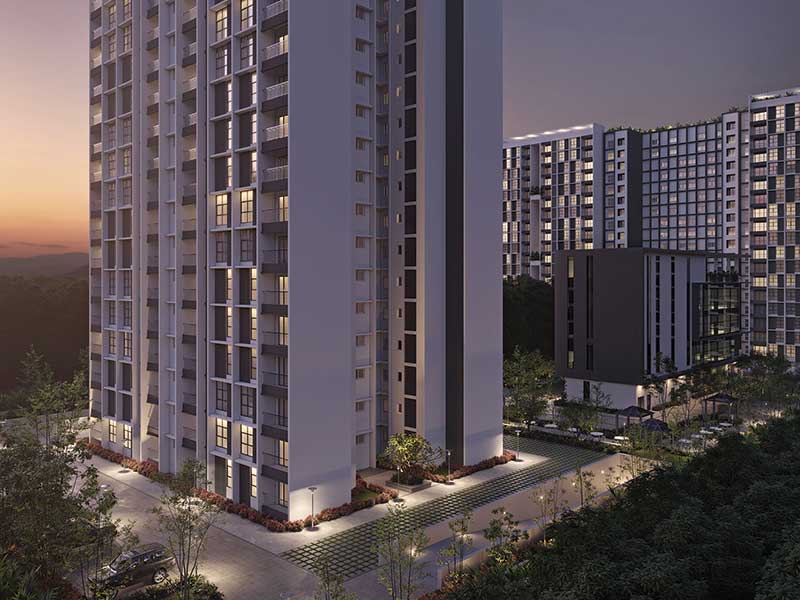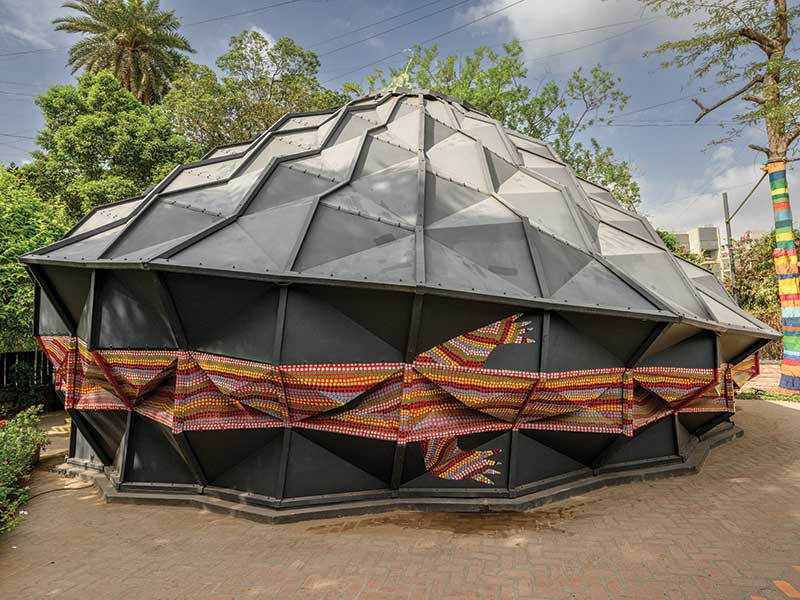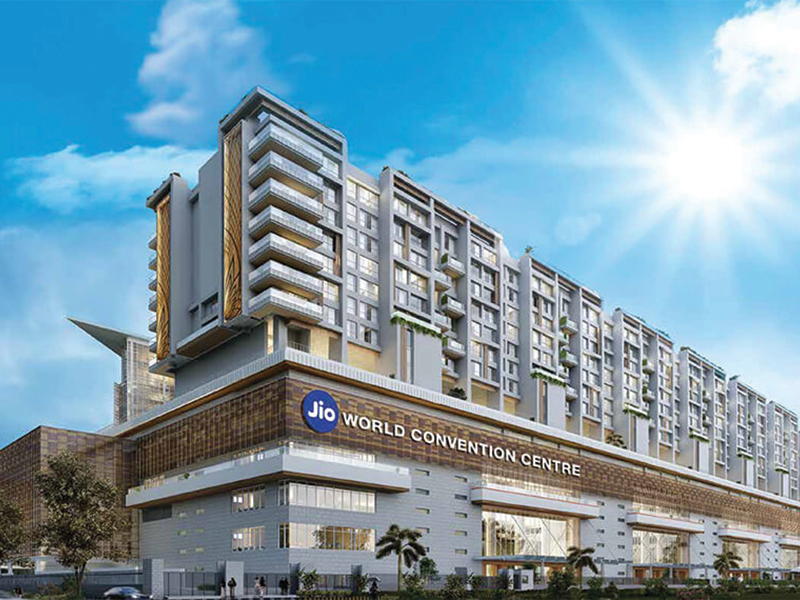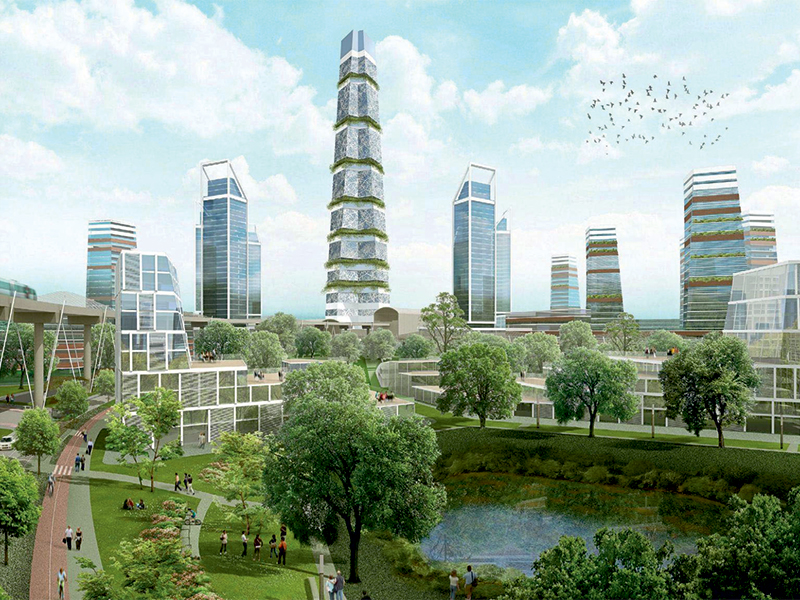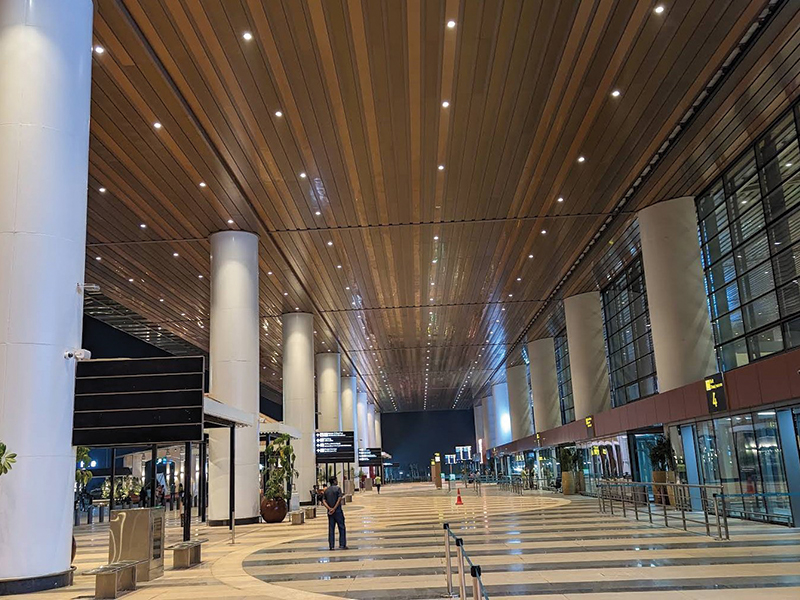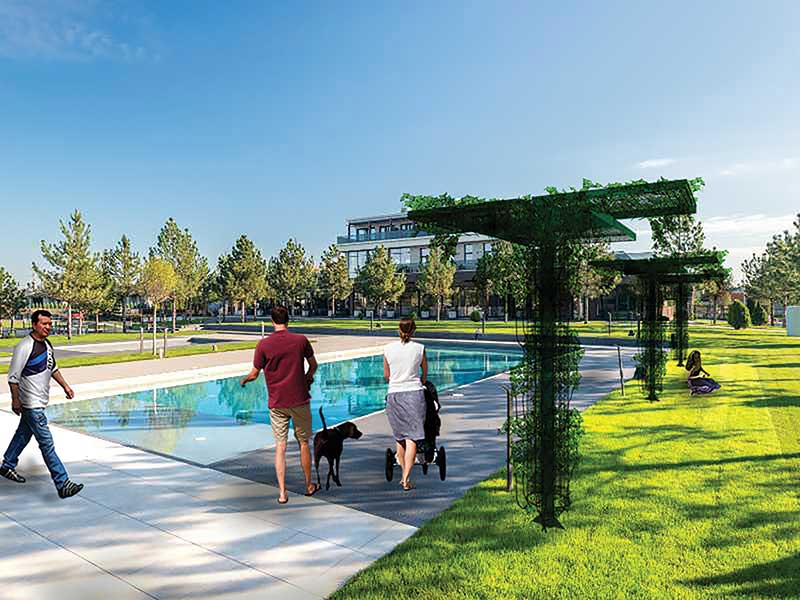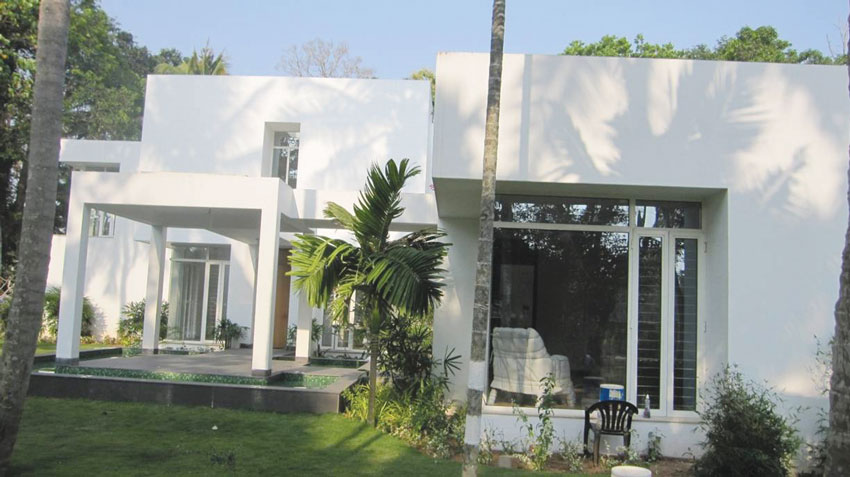
Growth of Housing Sector in India

It is the housing sector that needs to be watched where it is anticipated that the growth would be higher than the commercial sectors. Even during the recent years of a rather lower growth in the construction sector, housing sector in India has grown at 20%. Notably, the housing loan disbursement rose from 2.63 lakh crores in 2008-09 to 3.64 lakh crores in 2010-11. (Source: RBI, August 2011, New Delhi).
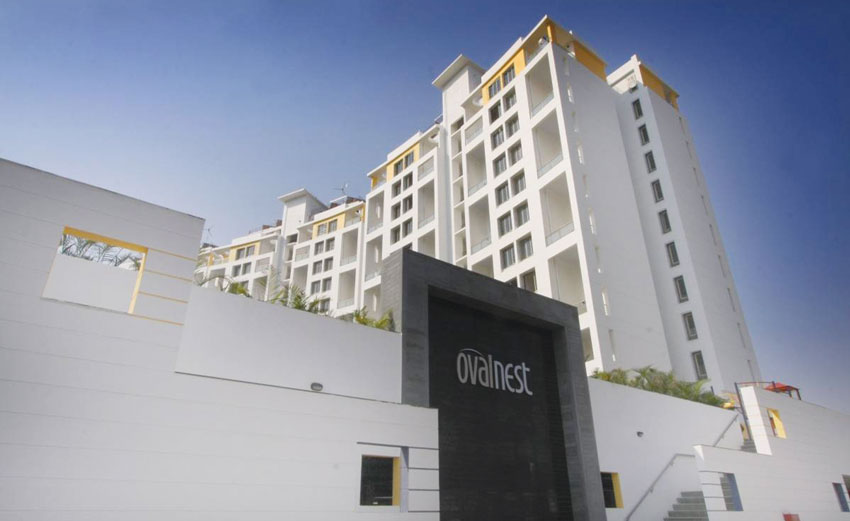
It is anticipated that the built-up space in the building sector would rise from the current 20 billion sq.ft to 100 billion sq.ft in the next 20 years
The buildings sector accounts for at least a third of all energy related CO2 emissions worldwide [Source: UNEP] and nearly 60% of the world's electricity is consumed in residential and commercial buildings (although this usage varies widely according to geographical location, climate and consumption patterns) [IEA 2009] .This sector has a major role to play in enhancing resource efficiency in the coming years.
Need & Expectations from Green Homes
Eco-friendly designs are not alien to the Indian ethos. Historically, there has been excellent rendition of eco-sensitivity in the design of many monuments. The challenge today is how such an approach can be made the mainstream of design philosophy.Green homes reduce operating costs, enhance marketability in case of residential apartments, and reduce health problems resulting from indoor air quality problems.
Till about a decade, all manifestations of eco-design were not inherent in one single building or community. A highly energy-efficient or a water efficient home could get away being called as 'green'. Today, a green home needs to address all facets of environmental concerns, be it the site, water, energy, materials, and indoor air quality related aspects.
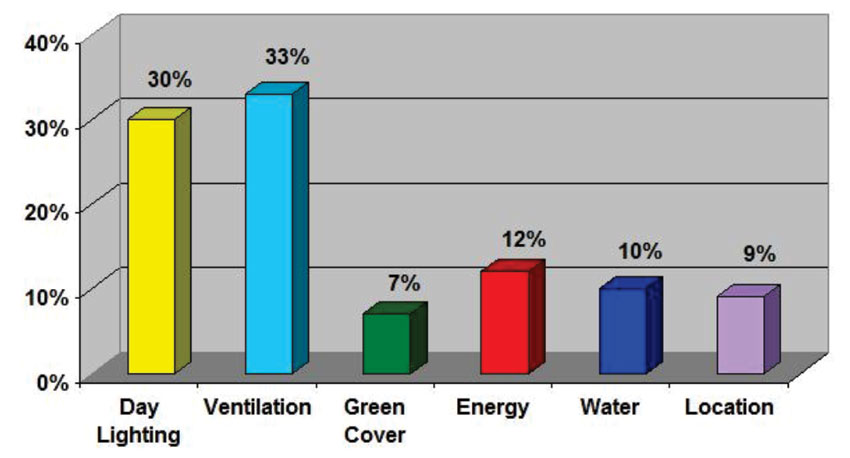
Green practices adopted in residential buildings can substantially reduce or eliminate negative environmental impacts. As an added benefit, green homes reduce operating costs, enhance marketability in case of residential apartments, and reduce health problems resulting from indoor air quality problems.
Stakeholder Survey for Green Homes
A survey was conducted by the Indian Green Building Council (IGBC) to comprehend stakeholders' perceptions on what they perceive as a 'green home'. The respondents were asked to choose top three green features, while buying a house, which they would not compromise.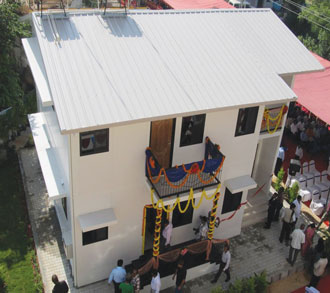
The IGBC survey results showed that, more than 60% of the respondents have chosen day-lighting and ventilation as top priorities on which they would not compromise, while choosing a house.
Interestingly, the IGBC survey results showed that, more than 60% of the respondents have chosen day-lighting and ventilation as top priorities on which they would not compromise. Energy efficiency and water savings which were opted by about 22% of respondents were found to be next priorities.
IGBC Green Homes Rating System
Based on several feedback and surveys, IGBC has launched IGBC Green Homes rating system, the first exclusive residential rating program in India. This rating system is a voluntary, consensus-based and market-driven programme, and is designed to address occupant priorities.The rating system received overwhelming response, both from developers and individuals. Today, over 660 green building projects, with built-up area of 610 million sq.ft are being designed as IGBC Green Homes.
Different types of dwelling units covered under IGBC Green Home rating program include independent houses, gated communities, villas, residential apartments, service apartments, guest houses, hostels, and resorts. Existing residential dwellings can also be retrofitted to meet the green homes criteria.
Benefits of Green Homes
A green home can have tremendous benefits, both tangible and intangible.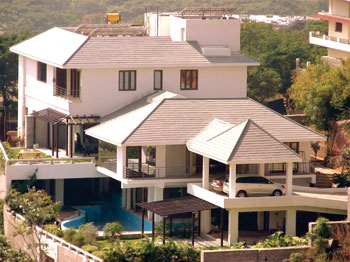
Green homes can have energy savings to the tune of 30 - 40 % and water savings to an extent of 20 – 30 % over conventional homes.
The most intangible benefit is that 90% of these homes have adequate daylighting. Enhanced ventilation as compared to conventional homes is another significantly notable feature.
Top 10 Eco-friendly Features in IGBC Green Homes:
Some of the distinct measures which one may not normally find in conventional designs include wall insulation, roof Insulation, day lighting through the use of sun pipes, shading devices, use of salvaged materials, low VOC (Volatile Organic Compounds) paints, on-site waste water treatment, vermi-composting, energy & water sub-metering and the installation of energy efficient appliances.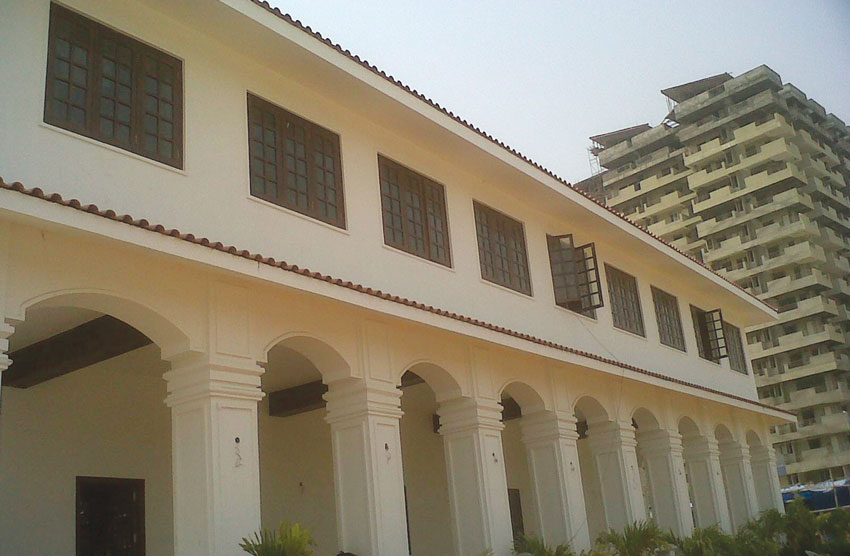
Conclusion
Considering the projected growth of the residential sector, it is imperative to work on the agenda of green homes to ensure a sustainable living. The residential sector can contribute significantly in climate change mitigation. Green Homes should be a national priority, as it is beneficial to the individual, society, and the nation.Islands of individual excellence are fine but to reap quantum benefits, green homes should become a way of design philosophy and not an exception. IGBC is well on its way to translate this in to a reality.
